-The subject of this tapestry is a summary of two mythological episodes both told in the first book of Ovid's Metamorphoses* and represented here in a wooded landscape unifying the whole.
-These mythological episodes are a pretext to demonstrate the high quality of execution of the weavers of these Parisian workshops and the intelligence of the cardboard maker who offers a story well anchored in a green setting thus echoing the traditions of the art of tapestry with greenery . The wide original border of this tapestry has a great decorative effect. Very busy, it evokes the rich decorations of the Regency. She deploys a decorative program very rich in ornaments with a predilection for certain motifs such as cut leather, cupids, shells. There are notably allusions to Cupid with cupids and Apollo with laurel wreaths. The moderate polychromy of this border is in harmony with the landscape of the central composition.
-Thus, we observe a high quality of drawing, it is careful with a real search for depth thanks to the succession of the different planes. Also note the fineness of execution (8 threads/cm) of the weavers, who with great attention to detail made it possible to transcribe the smallest details. A thorough observation of this tapestry allows us to compare it to the hangings of Métamorphoses woven in the Parisian workshops and particularly that of Alexandre de Comans who directed the factory in the Faubourg Saint-Marcel from 1635 to 1654 (see the work SAUNIER, Bruno , ed. Lisses et délices. Masterpieces of tapestry from Henri IV to Louis
Good state of condition, with restauration and halos visible in the photos.
Dimensions: 288 cm, Length: 382 cm
*The scene represented in the foreground is told in the Metamorphoses (1, 262-262) in which Apollo (here represented on the right, sitting cross-legged, with long wavy golden hair, a halo rays of sun around the head, a purple drape, carrying a lyre in the left hand and the index finger raised to speak) addresses Cupid (here represented in the center, walking in the opposite direction, his bow in his hand right while his left positioned behind his back supports his quiver), looking down on him: “Weak child, what are you doing with these heavy weapons? This quiver only fits the shoulder of the god who can deal certain blows to ferocious beasts as well as to his enemies, and who has just brought down, under a hail of arrows, this monster whose belly, swollen with so many poisons , covered so many acres of land. Be content to light, with your torch, I don't know what flames of love, and be careful not to claim my triumphs. » The second scene represented in the background on the left refers to another episode from the first book (1, 267-268). The one where Mercury (represented here with his helmet and winged sandals) seizes his sword to kill Argus (shown here asleep on a rock). Argus had been charged by Juno with watching over the nymph Io, transformed into a heifer by her lover Jupiter. Sent by Jupiter, Mercury put the shepherd to sleep with the sound of his flute to deliver Io. “But at the moment of telling this story, the god who received the day on Mount Cyllene notices that Argus, succumbing to sleep, has closed all his eyes. He stops speaking, and touching them with his powerful wand, he further weighs down the poppies with which they are loaded. Suddenly, with his curved sword, he strikes down the inclined head of the monster, where it joins the neck; rushed from the top of the mountain, the trunk rolls, and as it falls stains the bloody rock. »


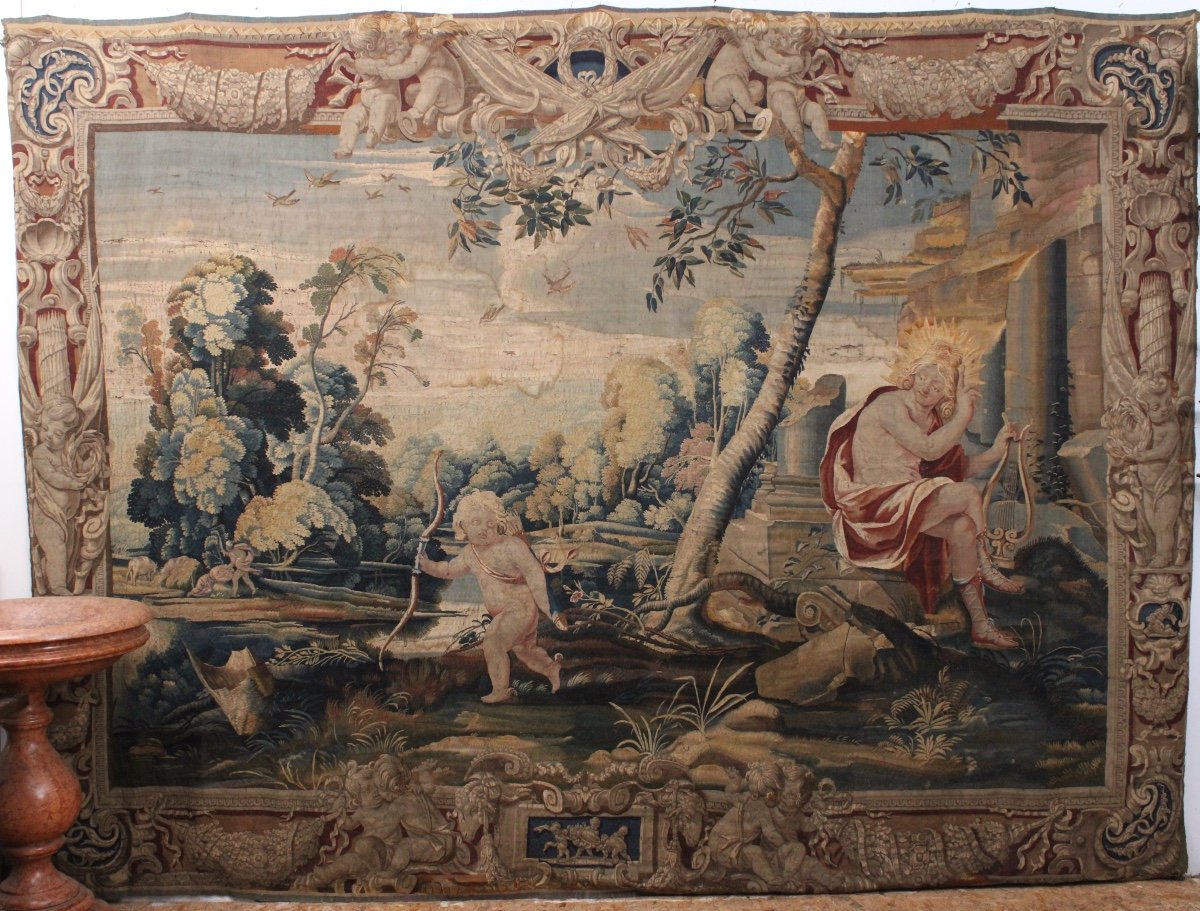
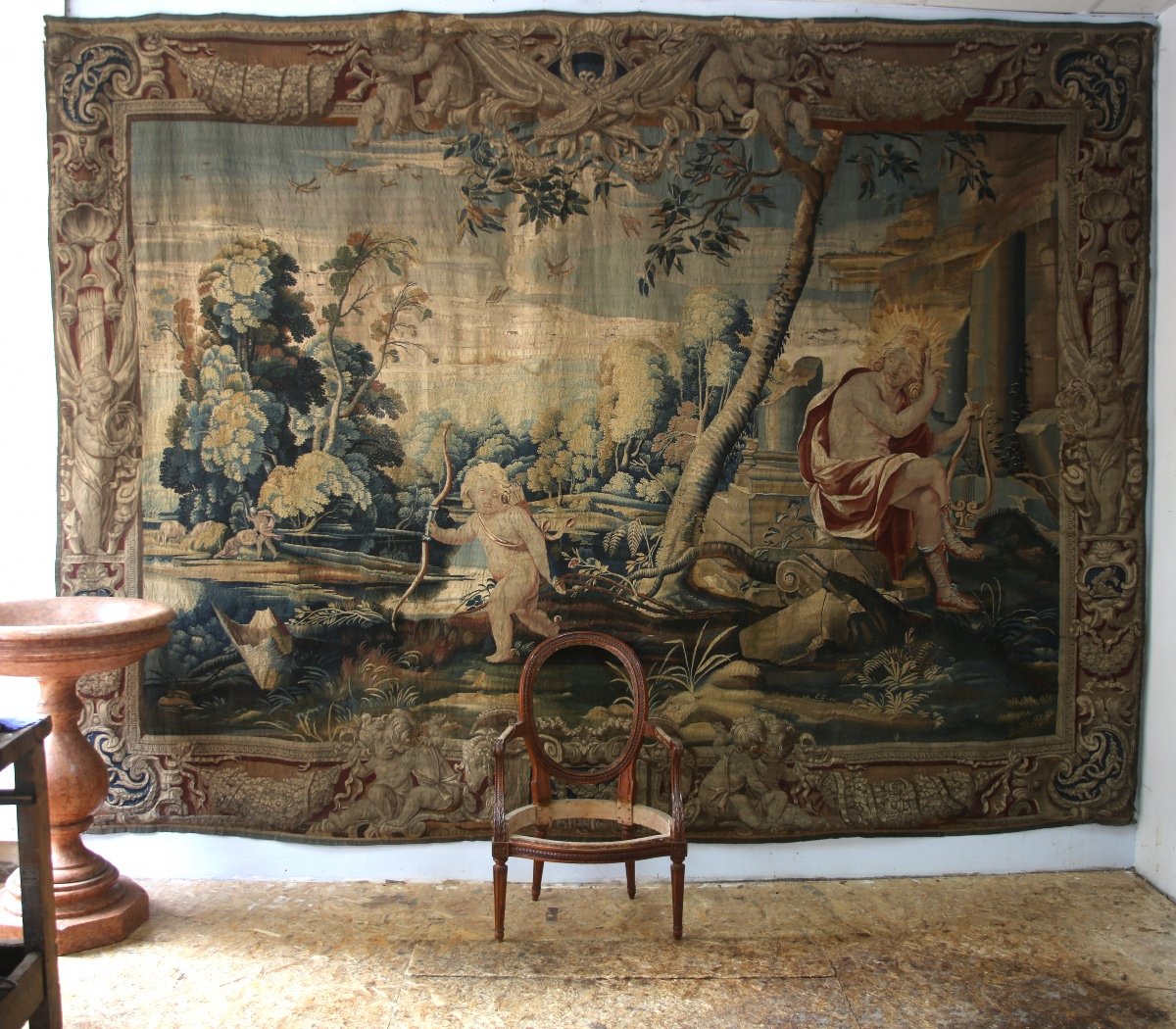
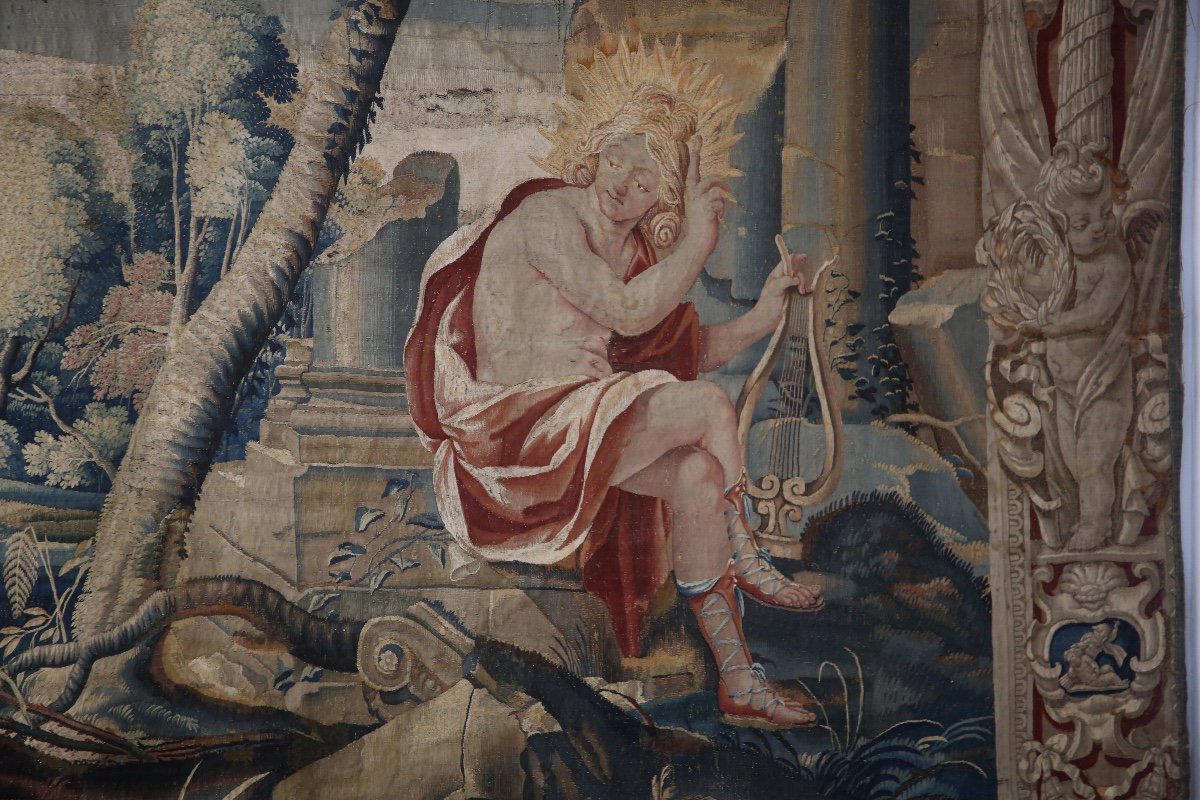
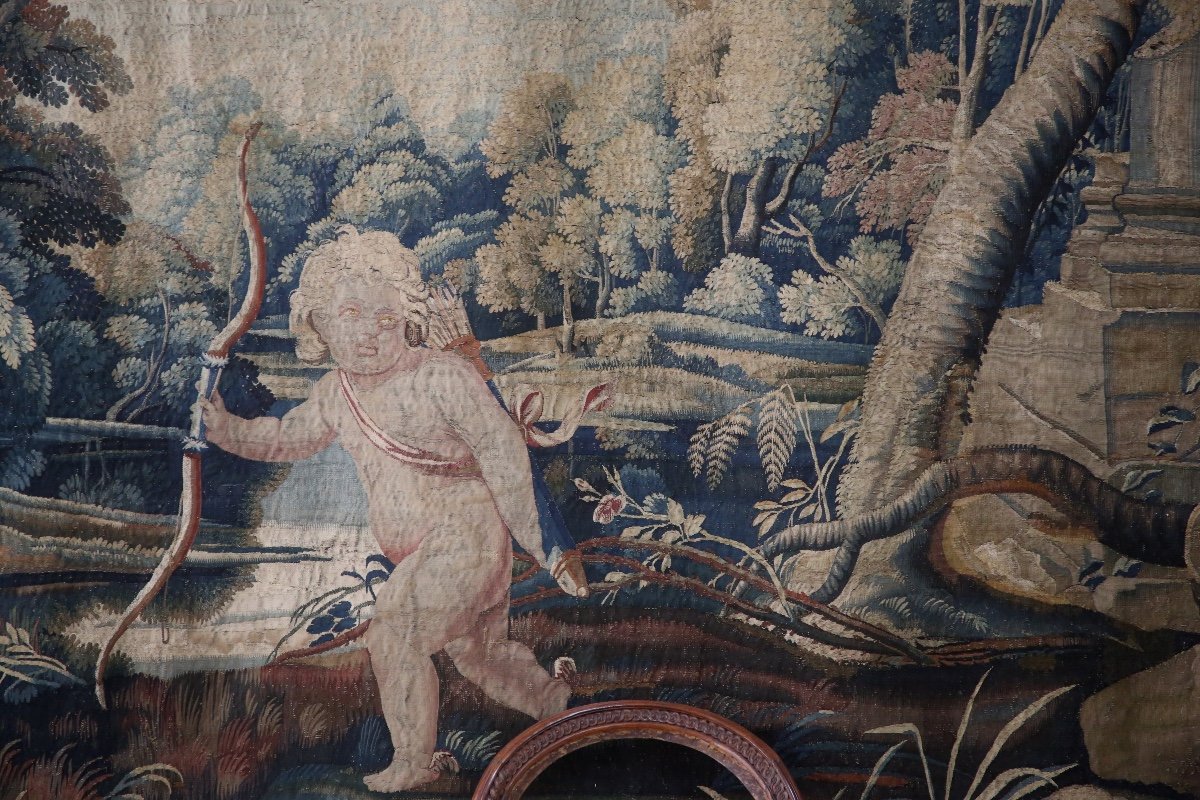
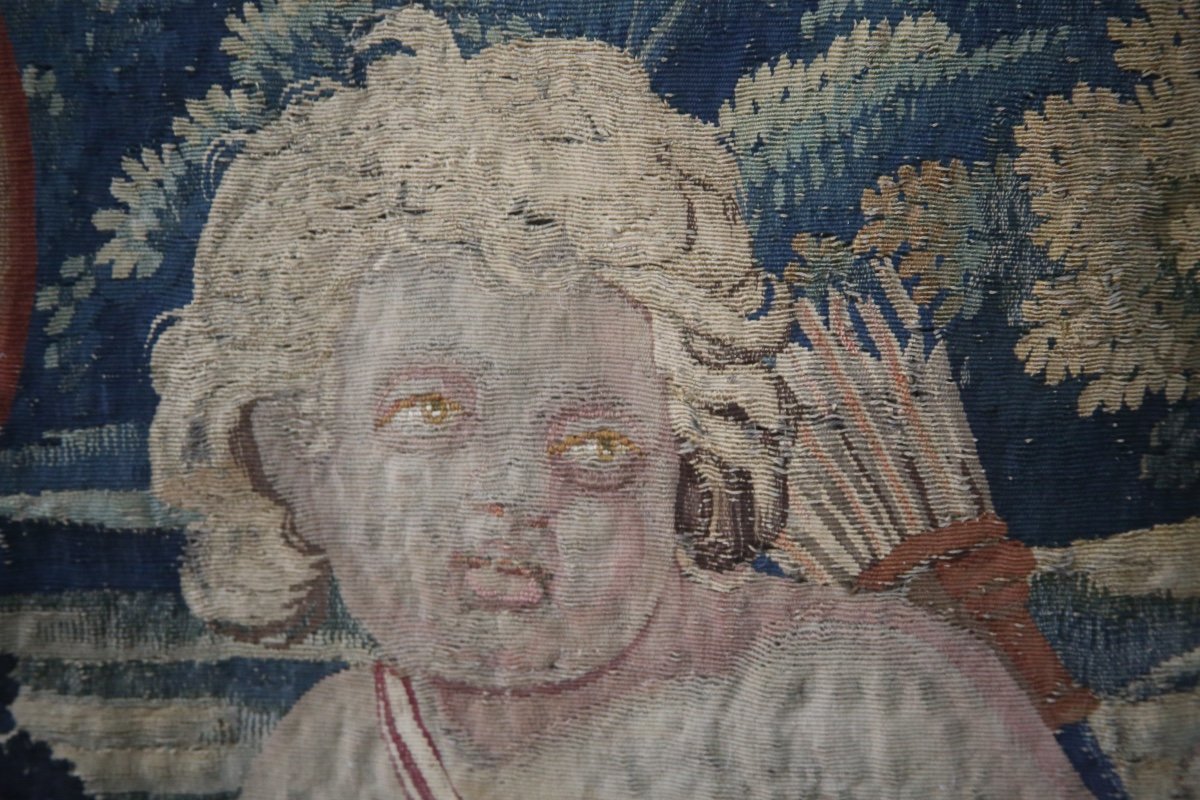
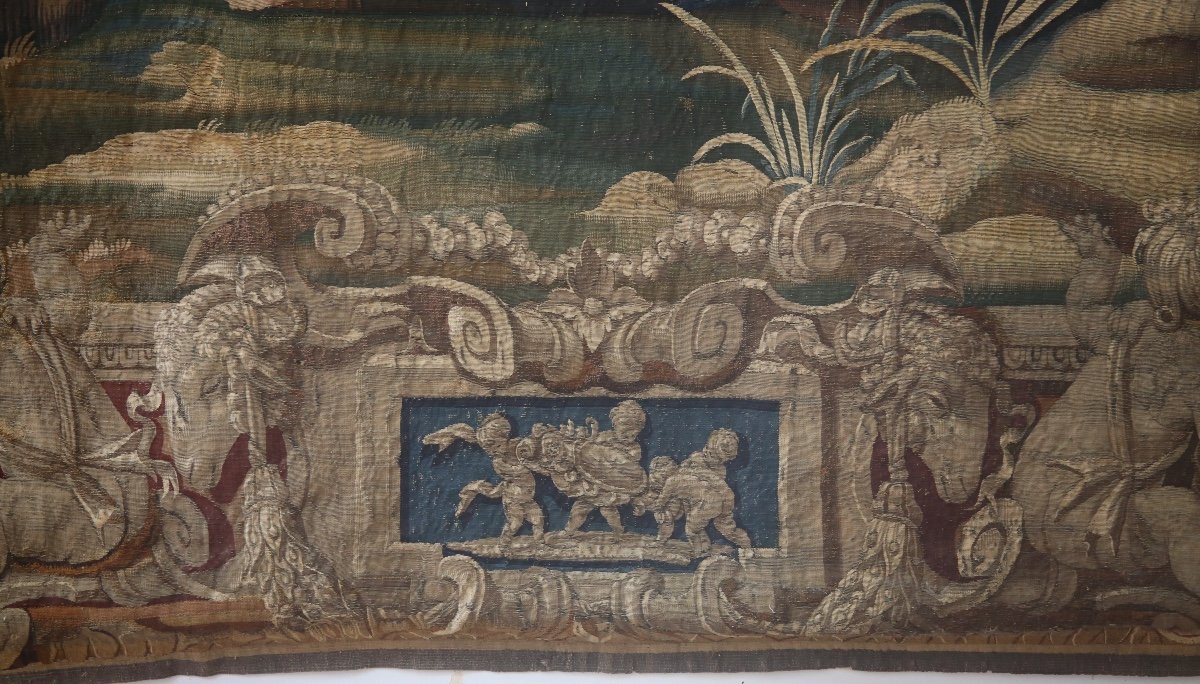
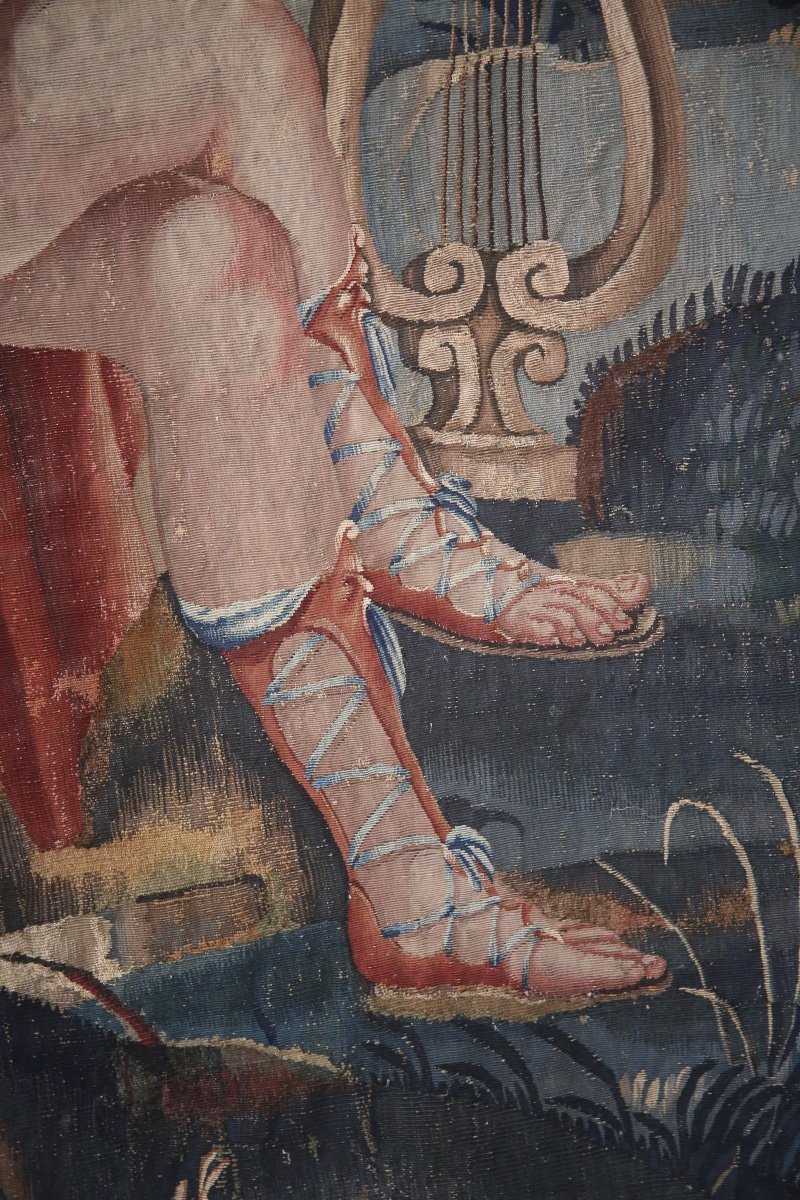
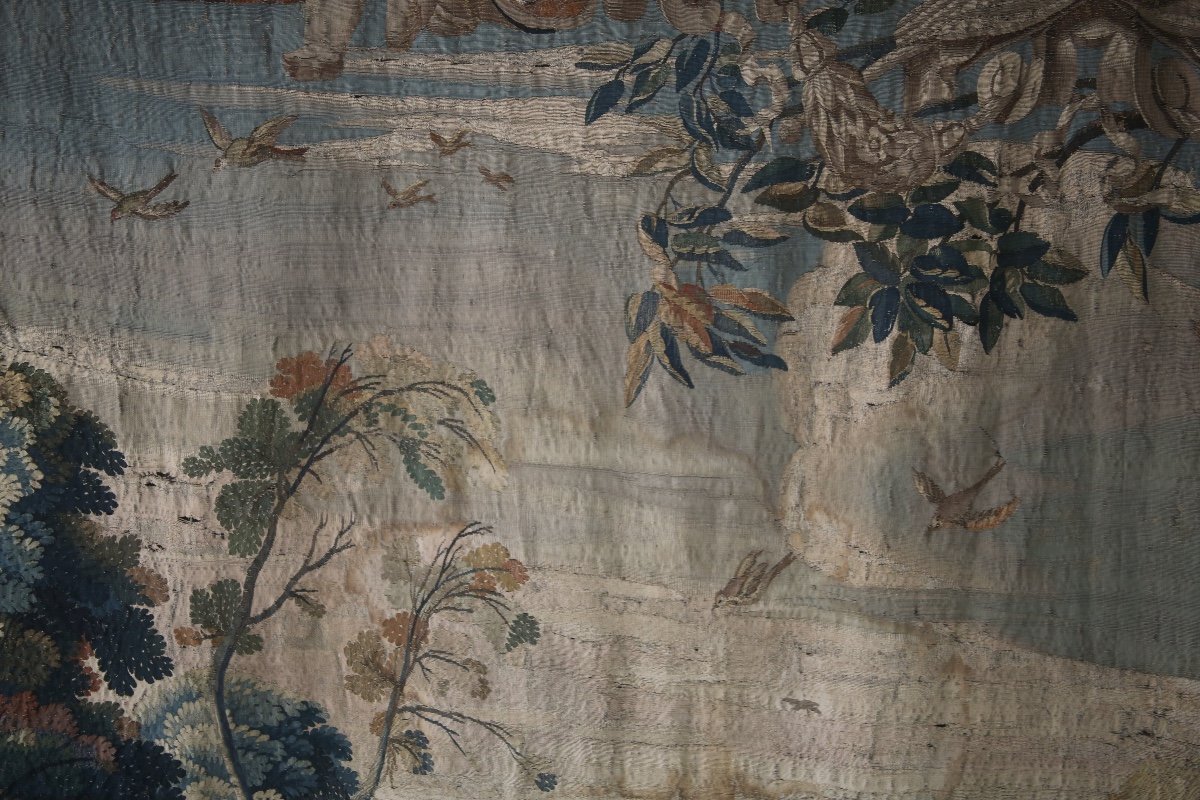
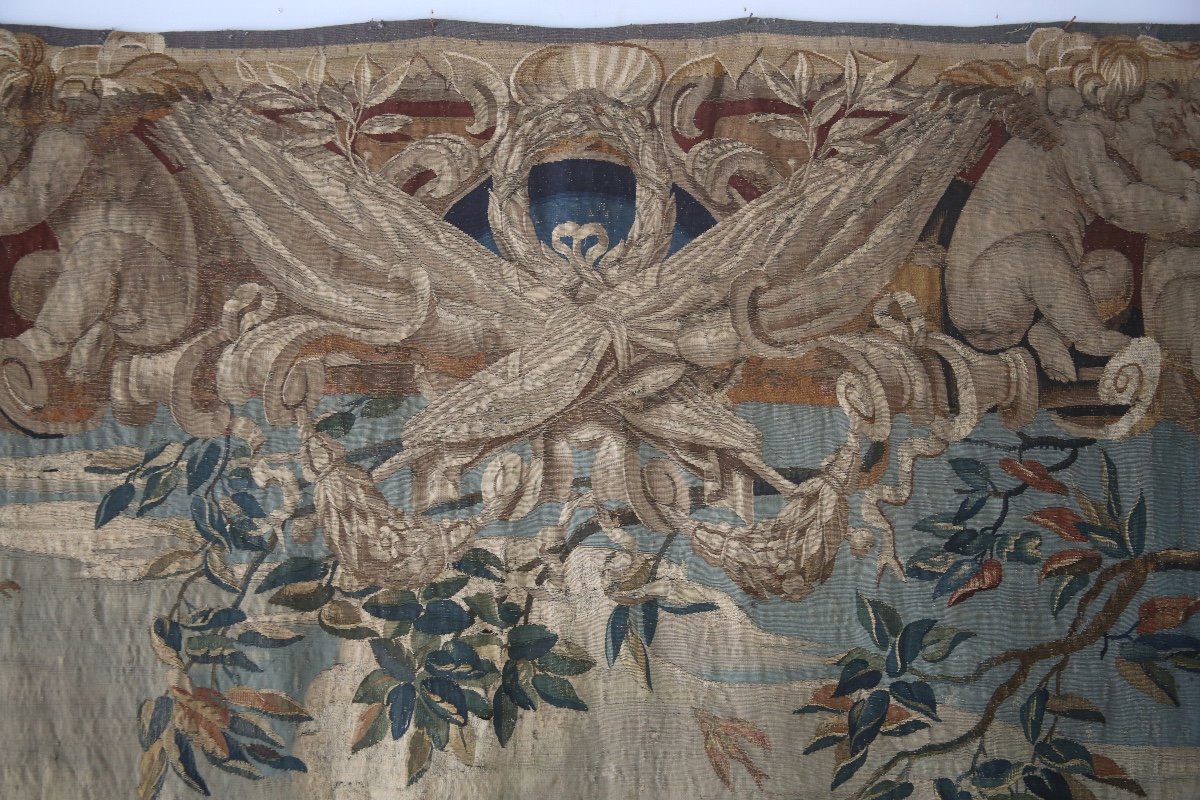
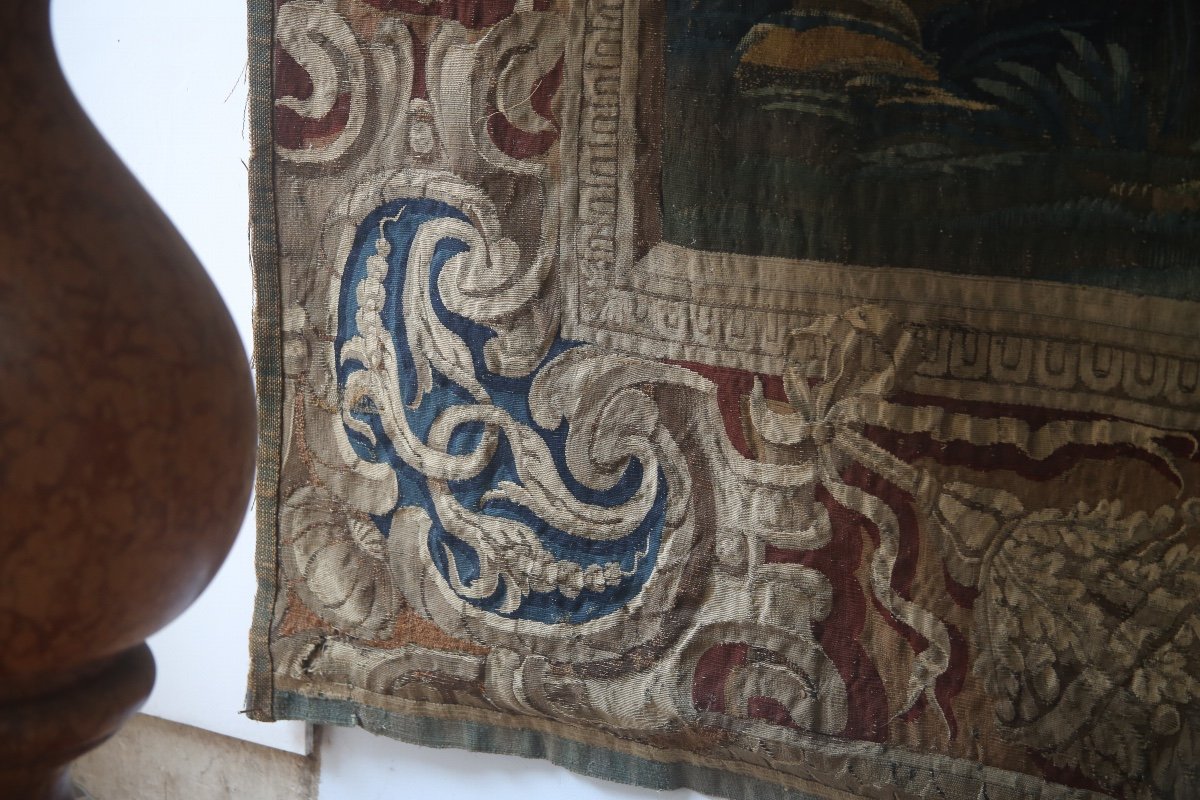
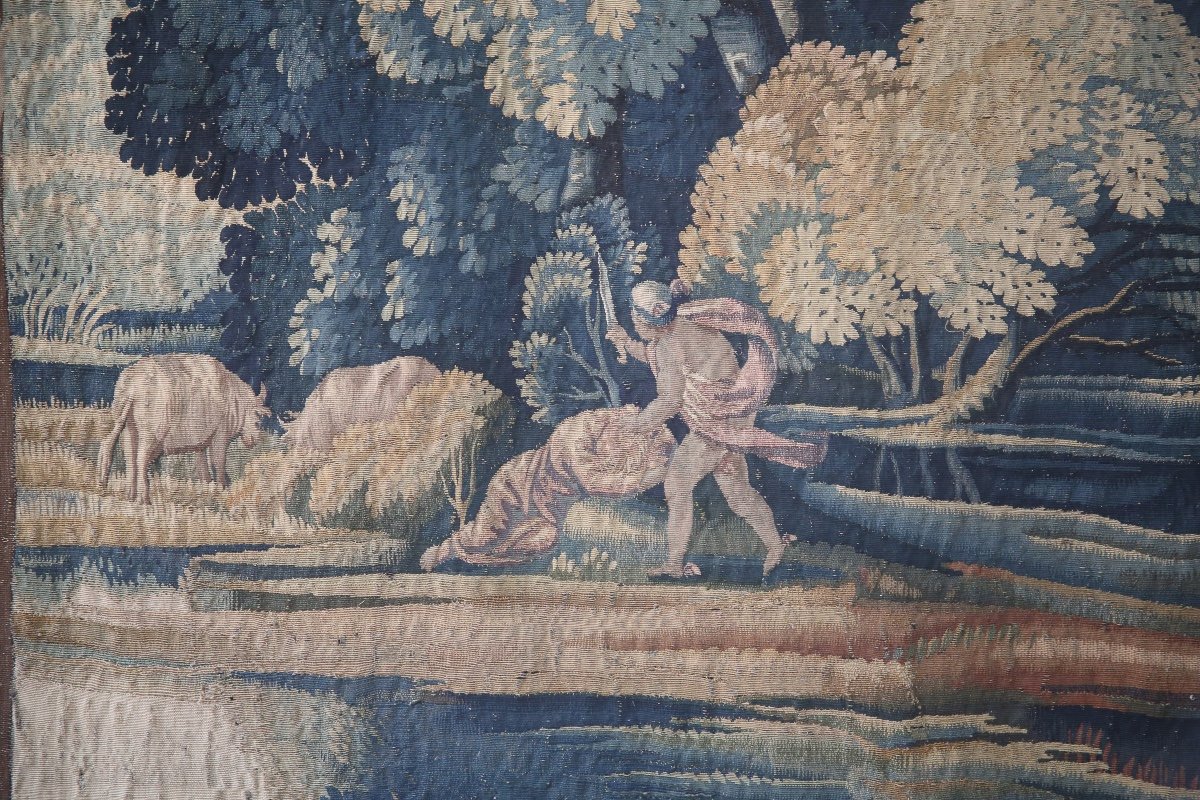
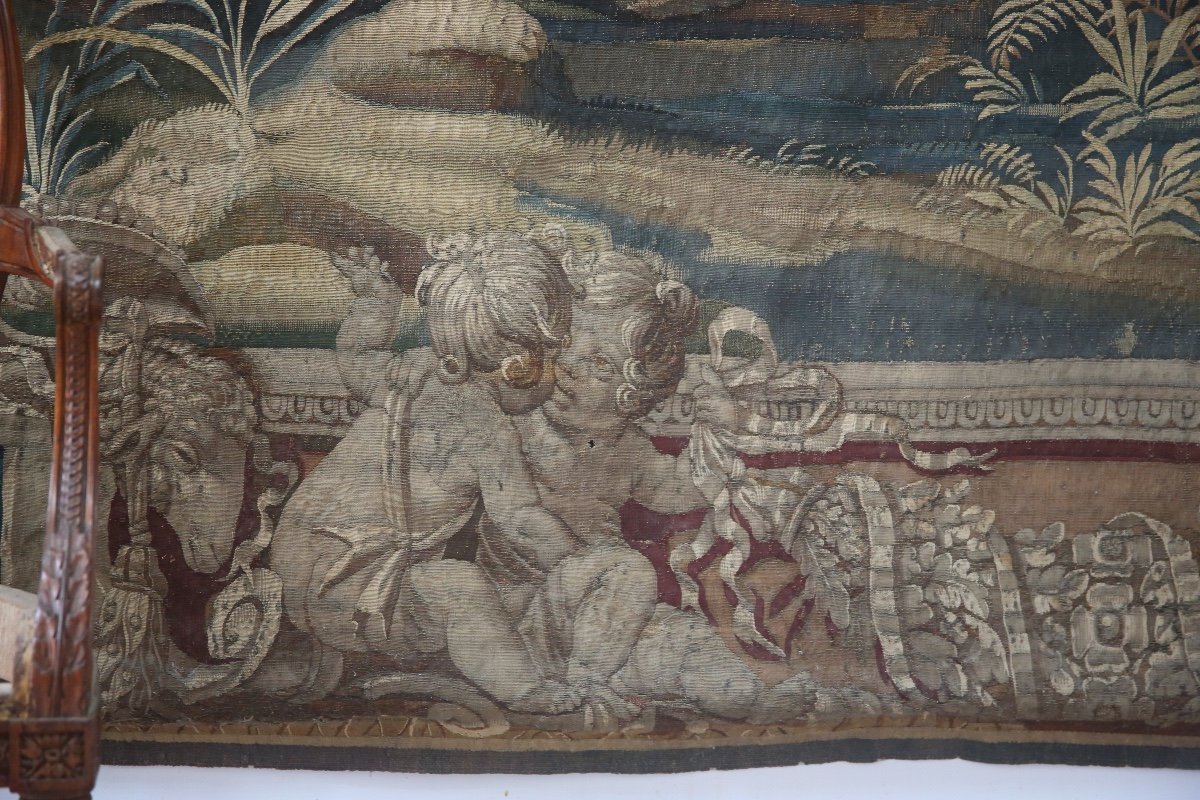














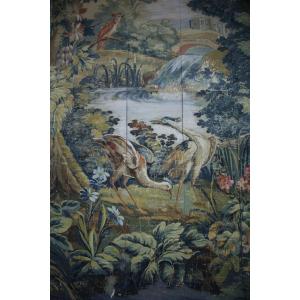
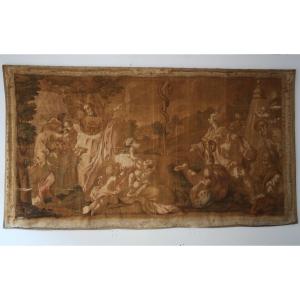

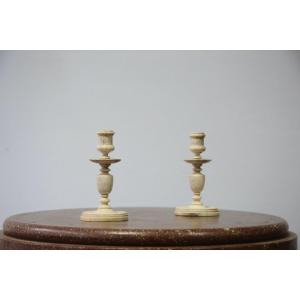
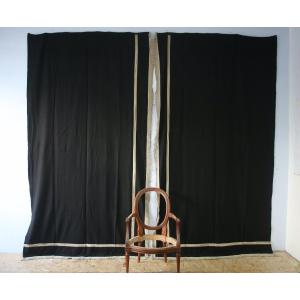
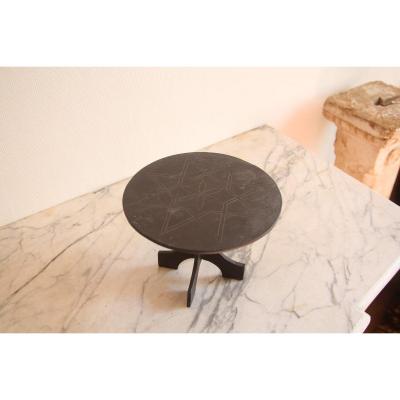
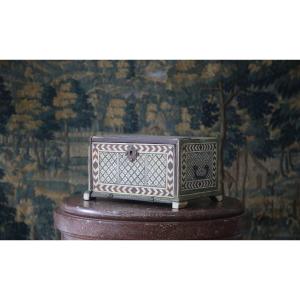



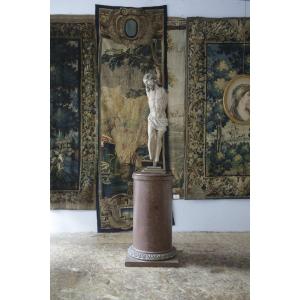
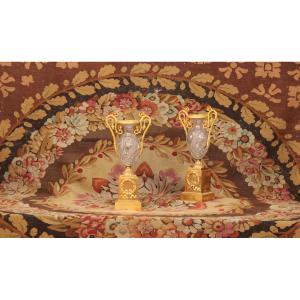

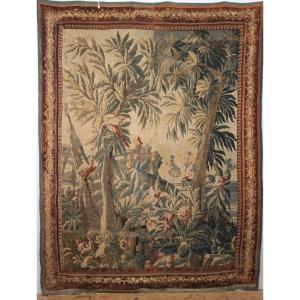








 Le Magazine de PROANTIC
Le Magazine de PROANTIC TRÉSORS Magazine
TRÉSORS Magazine Rivista Artiquariato
Rivista Artiquariato